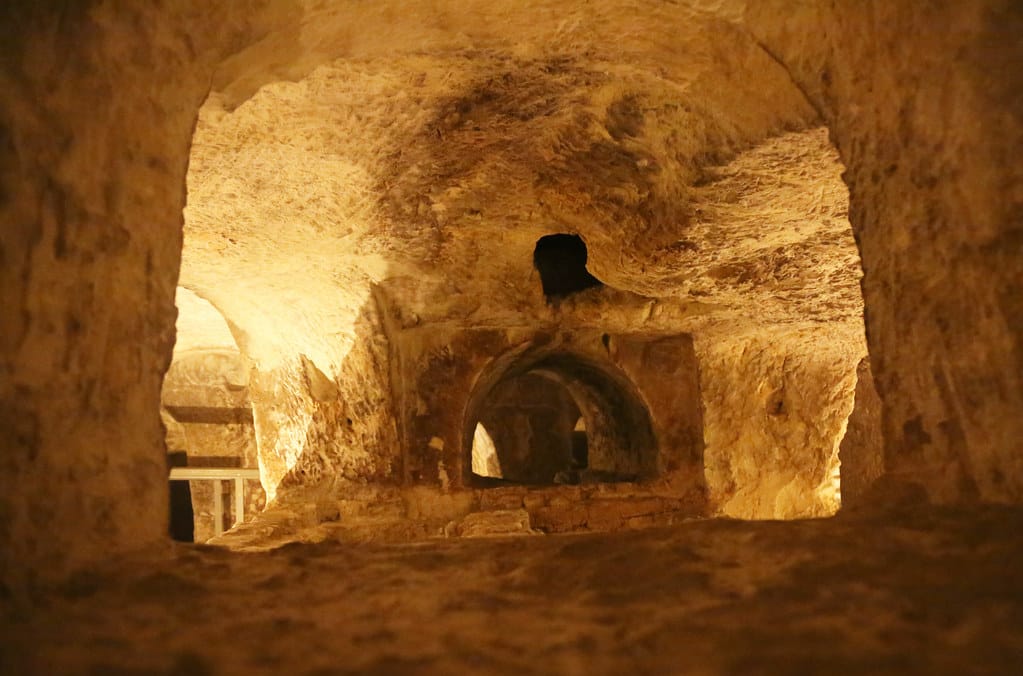St. Paul’s Catacombs Malta: An Ancient Burial Site Reflecting Early Christian and Punic Heritage
Visitor Information
Google Rating: 4.3
Popularity: High
Google Maps: View on Google Maps
Official Website: heritagemalta.mt
Country: Malta
Civilization: Byzantine, Phoenician, Roman
Remains: Religious
History
St. Paul’s Catacombs are located in Hal-Bajjada, near the towns of Mdina and Rabat in Malta. The site lies beneath these modern settlements, which were once part of the ancient city of Melite. The origins of the catacombs date back to at least the 3rd or 4th century BCE, during the Punic period when the Phoenician-Punic civilization inhabited the island.
During the Punic era, the area served as a burial ground, and this use continued through the Roman period. Over time, the burial chambers evolved, reflecting changes in cultural and religious practices. By the 4th century CE, the catacombs had expanded into larger, more organized underground galleries. This period coincides with the spread of Christianity in Malta, making the site the earliest and largest archaeological evidence of Christian presence on the island.
The catacombs remained in use through the Byzantine period, with burials continuing until the 7th or possibly 8th century CE. In the 13th century, following the re-Christianization of Malta, some of the catacombs were reused. During this time, a Christian shrine was created within the complex, decorated with murals, indicating a revival of religious significance.
The site was first fully excavated in 1894 by Dr. Antonio Annetto Caruana, a key figure in Maltese Christian archaeology. Since then, St. Paul’s Catacombs have been recognized for their historical importance and are managed by Heritage Malta, with ongoing research supported by the European Union.
Remains
The catacombs cover an area exceeding 2,000 square meters and consist of a network of underground galleries and tombs. This complex includes more than 30 hypogea, or underground burial chambers, within the wider St. Paul’s and St. Agatha’s area. Over 20 of these hypogea are accessible to the public today.
The entrance leads into two large halls, each supported by pillars carved to resemble Doric columns, a classical architectural style. These halls once featured painted plaster decorations, though most of the colors have faded over time. Within the halls are two circular agape tables, also called triclinia, carved from single blocks of living rock. These tables likely served as places for commemorative meals honoring the deceased.
The catacombs contain various types of burials, with baldacchino tombs being the most prominent. These are free-standing canopied tombs supported by four arches and pillars, lining the main corridors. Red-painted illustrations and inscriptions decorate some areas, adding to the site’s historical richness.
One smaller catacomb is notable for relief carvings of surgical tools on its blocking stones, suggesting it may have been reserved for a family or group of surgeons. The site also shows evidence of Christian and Jewish burials coexisting without separation in at least 24 catacombs, reflecting a diverse community.
The burial chambers evolved from deep rectangular shafts with side chambers in earlier periods to larger, more regular catacombs by the 4th century CE. Some catacombs were formed by joining neighboring tombs, creating more extensive underground spaces.








